Shirakawago
I felt a ton better the next morning and thankfully my appetite also returned. We went downstairs for breakfast in the lobby, then checked out and left our suitcases with the concierge. We only carried our backpacks with us as we made our way over to the Meitetsu bus station to pick up our tickets for Shirakawago.
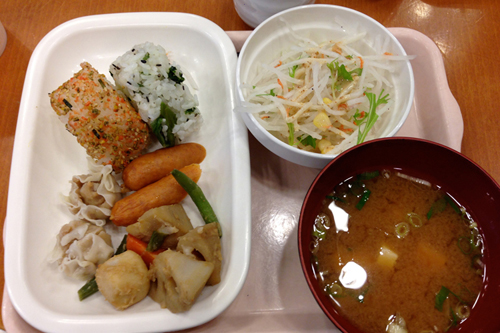
It was my first time taking a bus in Japan (with the exception of the airport limos I’ve taken to Narita). I’m not a huge fan of buses to begin with since I tend to easily get carsick, but it was actually alright taking the Shiryudo Highway buses for the four days we traveled between Nagoya, Shirakawago, Kanazawa and Takayama. For the most part it was on schedule with the exception of the snow we encountered, and I would highly recommend it as an alternative to the trains.
We finally arrived at Shirakawago around noon. We were really lucky it had snowed the night before because there was a layer of fluffy white snow blanketing the entire village. If you’ve ever seen postcards from Shirakawago in the winter with snow covering all the gassho-zukuri houses, that was exactly the scene we saw in front of us. It was pretty amazing seeing it in person.
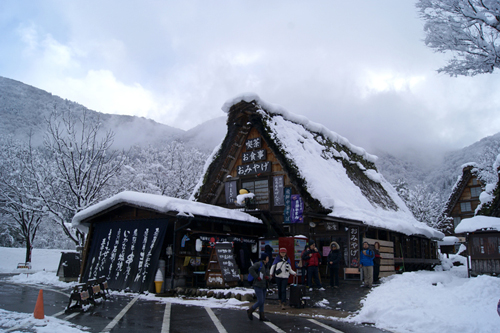
The bus dropped us off right at the visitor’s centre, then we had to cross the bridge to get to the main village. I was so glad I brought my winter boots with me cause it was a wet and slippery walk across. There were only a handful of restaurants that were open that day, so we had to walk a little further into the village before we finally found one called Irori. We each ordered a teishoku set. I got the yakidofu, while my sis and uncle ordered the hoba miso and Hida beef, which are both specialties in the region. We each tried a bit of everything and it was all delicious. =)
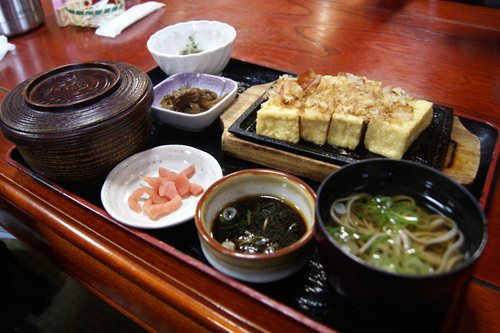
After we left, we decided to drop off our luggage at the minshuku we would be staying at for the night, called Kanjiya. My sis had made the reservations in advance through a Japanese guesthouse website. The correspondence was all in English so it’s a good option for people who are trying to book from overseas.
Getting to the actual minshuku was a little tricky. Since the snow was fresh, we couldn’t see the pathway leading to Kanjiya. We somehow ended up at the back and had to cut across this narrow and slippery path to get us to the front. It’s amazing I didn’t fall into the stream below!
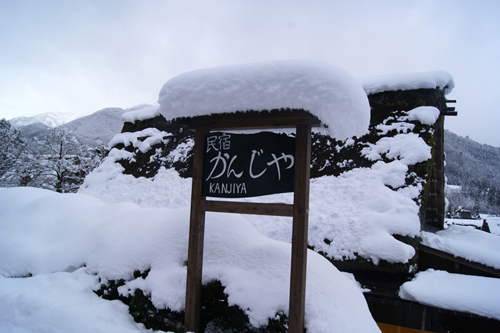
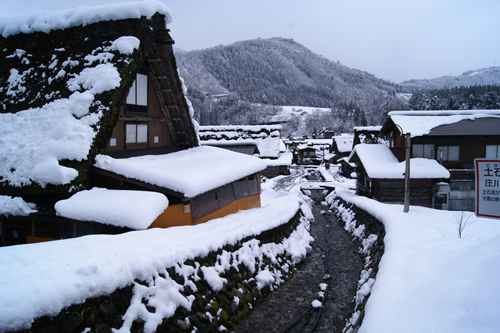
We dropped off our luggage with one of the nice ladies at Kanjiya and they lent us winter boots to use for the rest of our stay. I was still fine with my own, but my sister’s had soaked through and my uncle’s sneakers didn’t look like they would last either. We then went on foot to the Shiroyama viewpoint, which is up a hill overlooking the entire Shirakawago village. The walk itself wasn’t very long, but because it was uphill in the snow, it took a bit more time and effort to maneuver up. You can also take a bus that gets you to the viewpoint for 200 yen each way, but we saved that for the way down, since I didn’t want to slip and roll down the mountain. Lol
The trek up was really worth it cause seeing the village beneath us was absolutely breathtaking. Definitely what you would call a Kodak moment. =P
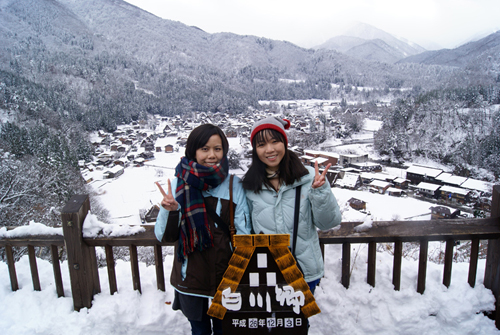
After we came down, we crossed back over the bridge and visited the Heritage Open Air Museum. It was nearing closing time so there weren’t as many people visiting, but that made it all the more tranquil inside. We took an hour to make a loop inside the museum and it was interesting seeing the buildings, including the interior of some of the houses.
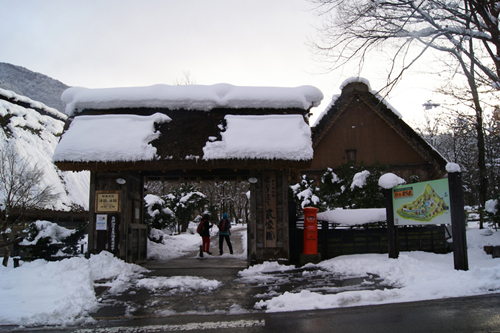
Later on we still had a bit of time so we traveled to the Nagase house and paid the 300 yen entrance fee to explore inside. While some of the minshuku are still traditional guest houses, others that are more renowned are opened to the public as museums. Nagase was a prominent family that specialized in medicine, so the interior of the house had many items dedicated to that field.
Once we finished it was nearing 5pm and most of the museums and shops were starting to close. Since it was too early to head back for dinner, my sis and I decided to go to the public onsen before returning to Kanjiya. Because we were staying in the village overnight we were given a discount ticket to use the public onsen. It cost 500 yen for a single entry. There’s also a cost for towel rentals. At least the lockers gave back our deposit so it was only 800 yen per person for the towel and entrance fee.
The onsen itself wasn’t huge, but it was still nice to visit after walking for most of the day. Once we were done we had to navigate back to Kanjiya in the dark. (I’m so glad I remembered how to get back. I had to really memorize the route cause I was afraid of getting lost and having to fend off the bears outside. Cause you know, they haunt the area. LOL.)
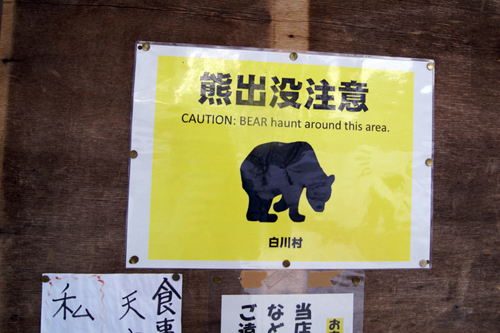
For dinner that night we ate with the other guests staying at the minshuku. They served us hoba miso and hida beef. We also had this really yummy fish called iwana that’s also a local specialty.
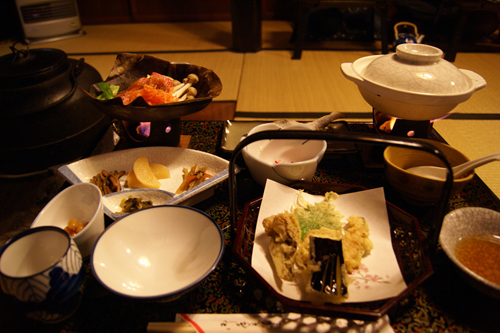
There wasn’t much to do after dinner. Everyone just retreated back to their rooms. It was a little cold inside though we had a heater on. I was worried I would freeze during the night since the heater was programmed to turn off, but actually the futons and the blankets were really warm. It was really easy falling asleep that night. For anyone thinking of visiting Shirakawago, I highly recommend staying overnight to get the full minshuku experience. =)